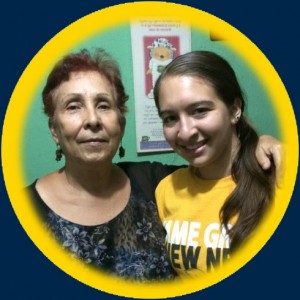 Two articles in Western New York Heritage Magazine (Spring 2016) prominently feature two historic Canisius initiatives that changed the landscape and future of the college. The authors both used resources available in the Rev. J. Clayton Murray SJ Archives and Special Collections to write their pieces.
Two articles in Western New York Heritage Magazine (Spring 2016) prominently feature two historic Canisius initiatives that changed the landscape and future of the college. The authors both used resources available in the Rev. J. Clayton Murray SJ Archives and Special Collections to write their pieces.
Jacek Wysocki,’66 remembered an extravaganza he knew about that took place in the early 20th century. He visited the archives not long after he heard reports that a popular country singer’s four performances had sold out the First Niagara Center. Click here to read the story.
That was nothing compared to the brainchild of college president, Michael J. Ahern, who booked “The Passion Play of Buffalo.” This epoch play featured a cast of 200 which traced Christ’s odyssey from the plains of Bethlehem to Calvary.” Performed at the Teck Theatre, Main and Edward streets in 1914, more than 18,000 people saw it over the course of ten performances. Music was provided by the Canisius College Orchestra and the cast included students and alumni. By 1917, the play was reprised at the Majestic Theatre with especially composed music and adaptations from classical composers.
By 1920, Father Ahern decided to commemorate Canisius’ Golden Jubilee by bringing the Passion Play to campus. He also announced the Golden Jubilee $1,000,000 capital campaign. With that, the space now known as “The Quad” became the stage for a massive theatrical undertaking that included construction of a stage (15,136 sq. ft.), tiered seating for 3000 and cast of 500. A revival in summer 1923 saw the cast increase by 200 and featured live animals including two camels (who later took up residence at the Buffalo Zoo), sheep that grazed in the quad, donkeys, horses and presumably a few neighborhood cats and dogs. At the premiere, Father Ahern shared a “successful completion of the Golden Jubilee campaign goal.” The funds derived from that Capital Campaign gave rise to two new wings on the original Old Main, and expanded curriculum. It is firmly believed that the popularity of the plays had “shone the spotlight on the school” and benefited the capital campaign, and enrollment.
Charles E. Stanley, Jr. writes in his article on the Aviation Cadet Training for the Army Air Forces (AFF). In 1939, the United States had yet to build up its military power, and war had already come to Europe. Industry began to answer the call with increased manufacture of planes for the war effort, but personnel lagged. The U.S. Army Air Corps, considered elite for its “rigorous physical standards”, had two other requirements—perfect eye-sight and two years of college. Stanley writes, “…only a quarter of American adults finished high school and only five percent had college degrees (at this time).” Click here to read the story.
By 1941, it was apparent that recruits would be needed. The AFF dropped the two-year college requirement for a qualifying exam. That opened the doors to thousands of recruits, but also caused a backlog in ability to train more than 70,000 recruits. That crisis was solved by providing basic training and then sending recruits into the Aircrew College Detachment Training (ACD) program at local colleges and universities. Canisius CDT trainees were housed at what is now Canisius High School and took their training in classrooms, drilled along Main St., near the Curtis-Wright and Bell aircraft factories and even the quad. By 1944, the CDT program was shut down. The impact on colleges was problematic: “…nearly half of their enrollees in 1943-44…” were military trainees. That left seats open for women, younger men eager to get an education to join the war effort, or seek promotion at their jobs in the factories manufacturing supplies, or to continue education to teach the next generation of Americans. Campuses would never be the same, and after the war, the GI Bill gave a boost to enrollment, too. Indeed some of the men who first saw the campus as CDT trainees returned.
For more information on the Passion Play or the Canisius College Detachment Training Program contact, Kathleen DeLaney, archivist at delaneyk@canisius.edu or Ext. 8421
Submitted by: Kathleen DeLaney, archivist and special collections librarian
 Spanish faculty are committed to service learning. The bulk of the programs’ 300-level courses on conversation, as well as some courses on composition, have a service-learning component for students to practice their language skills and glean cultural literacy through interaction with the Spanish-speaking populations of Buffalo. These populations include both long-term residents as well as migrant and refugee populations. Groups that students serve include the Los Tainos retirement center, the Boys and Girls Club for after school programs, bilingual schools and Journey’s End/Vive la Casa.
Spanish faculty are committed to service learning. The bulk of the programs’ 300-level courses on conversation, as well as some courses on composition, have a service-learning component for students to practice their language skills and glean cultural literacy through interaction with the Spanish-speaking populations of Buffalo. These populations include both long-term residents as well as migrant and refugee populations. Groups that students serve include the Los Tainos retirement center, the Boys and Girls Club for after school programs, bilingual schools and Journey’s End/Vive la Casa.


 Two articles in Western New York Heritage Magazine (Spring 2016) prominently feature two historic Canisius initiatives that changed the landscape and future of the college. The authors both used resources available in the Rev. J. Clayton Murray SJ Archives and Special Collections to write their pieces.
Two articles in Western New York Heritage Magazine (Spring 2016) prominently feature two historic Canisius initiatives that changed the landscape and future of the college. The authors both used resources available in the Rev. J. Clayton Murray SJ Archives and Special Collections to write their pieces.